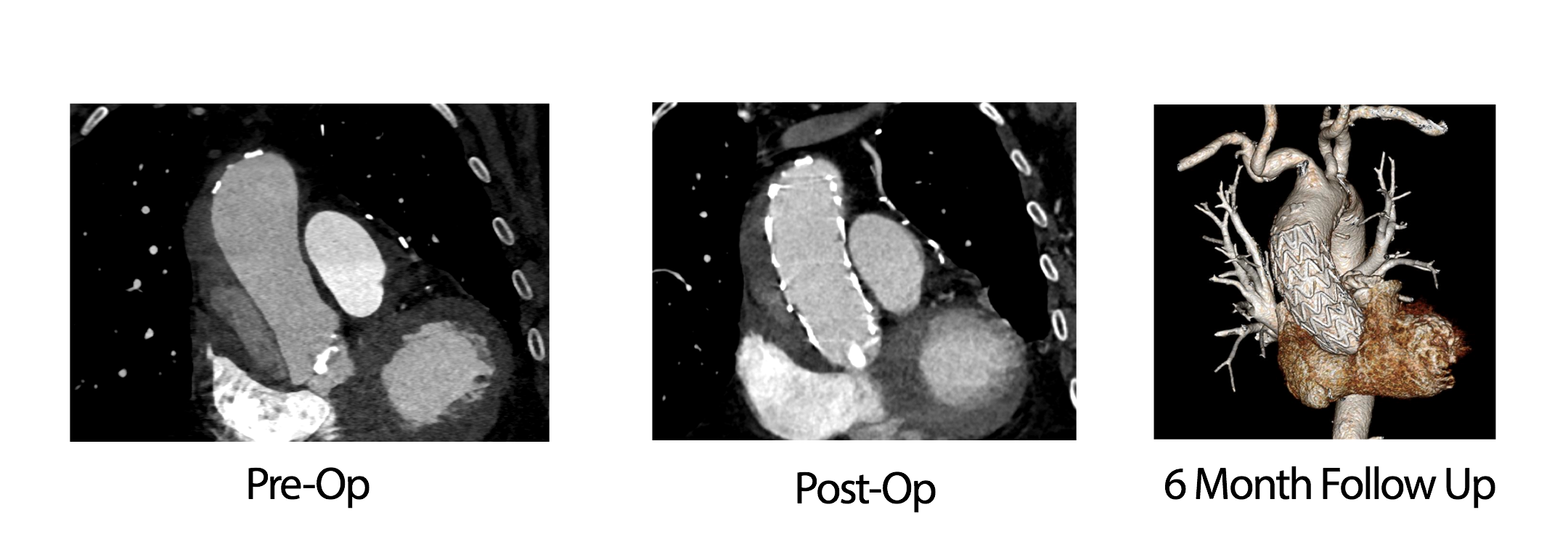Endovascular Treatment of Ascending Aortic Pathology in Otherwise Inoperable Patients Yields Favorable Outcomes
Motahar Hosseini, MD, Mehrdad Ghoreishi, MD, Aakash Shah, MD, Jean Jeudy, MD, Chetan Pasrija, MD, Josh Leibowitz, MD, Rajabata Sarkar, MD, Shahab Toursavadkohi, MD, Bradley S. Taylor, MD.
University of Maryland Medical System, Baltimore, MD, USA.
OBJECTIVE: More than 10% of patients presenting with ascending aortic disease are considered inoperable. For these patients endovascular repair of the ascending aorta provides the best alternative option. Here we provide evidence in favor of feasibility of endovascular repair of the diseased ascending aorta in otherwise inoperable patients.
METHODS: From January 2018 to June 2018, 10 patients with ascending aortic pathology who were not a candidate for open surgery were selected to undergo endovascular repair of ascending aorta. In one patient, coil embolization was performed in addition to balloon expandable stent placement. Preoperative and follow-up computed tomography (CT) analysis was performed to compare the remodeling effect of the stent on the aorta. The mean follow up time was 6 months.
RESULTS: In all 10 patients, successful endovascular placement of the ascending aortic stent graft was achieved. The pathologies of the ascending aorta were acute type A dissection (N = 6), ascending aortic pseudoaneurysm (N = 2), penetrating aortic ulcer (N = 1), and chronic aortic aneurysm (N = 1). Postoperative mortality was 10% (N = 1). The cause of death was intracerebral hemorrhage on post-operative day 3. One patient underwent open infected prosthetic AV replacement 2 weeks after endovascular repair of ruptured pseudoaneurysm. Among patients with dissection, the location of the primary tear was in zone 0A in 2 patients, zone 0B in 3 patients, and zone 0C in 3 patients. Two out of 10 patients had endo-leak after the procedure (20%). Both patients had acute type A dissection with the location of tear in Zone 0A. Follow up CT scan revealed favorable ascending aortic remodeling (mid ascending false lumen diameter; preop = 15 ± 15 mm, follow up = 5 ±7 mm, P = 0.05).
CONCLUSIONS: Endovascular stent grafting of the ascending aorta is feasible and provides an option for high-risk, otherwise inoperable patient population with ascending aortic disease. Favorable aortic remodeling was observed after ascending aortic stent placement.

Back to 2019 Abstracts
